Olympus Stylus 1 Review
Olympus Stylus 1 Introduction
The Olympus Stylus 1 is a new entry in the advanced compact digital camera category aimed at photographers. It is built upon a slightly-larger-than-average 12 megapixels CMOS sensor paired with an bright F/2.8 constant-aperture wide-angle 10.7X optical zoom lens. This impressive lens offers a 28-300mm equivalent zoom range.
The Stylus 1 is a full-featured digital camera with numerous manual controls and an efficient interface, including dual-control dials and a traditional mode-dial. It includes PASM exposure modes, manual focus, custom white-balance with 2-axis fine-tuning, choice of metering patterns and 5 types of bracketing! This premium camera supports external flashes via its hot-shoe, something very rare among compact digital cameras.
The big addition relative to the smaller premium XZ-2
Olympus Stylus XZ-2 is a large and ultra-sharp built-in EVF with 1.4 megapixels and an Eye-Start sensor. The Stylus 1 inherits the dual-action control-ring around the lens barrel which switches between stepped and continuous rotation, allowing natural control over exposure parameters and focus.
The CMOS sensor used in the Olympus Stylus 1 has a large ISO range from 100 to 12800, all at full-resolution. It also captures full 1080p HD video at 30 FPS. The camera has a built-in stereo microphone but lacks the accessory-port of the XZ-2 for external sound.
This feature set is ideal for photographers looking for a second light-weight camera to keep with but still be able to shoot creatively. It is an excellent option for people wanting to learn photography.
Olympus Stylus 1 Capability - What can it do?
The Olympus Stylus 1 is one of the most versatile fixed-lens digital cameras around. The extensive feature set is suitable for most photography subjects. Its combined bright constant maximum aperture and ISO range lets the Stylus 1 shoot hand-held in relatively low-light without being forced to stay at wide-angle. The shutter-speed range is favorable to shooting at night from a tripod and capture light-trails for up to 15 minutes. In this review section, we describe each important feature and what it implies.
12 Megapixels CMOS Sensor
With 12 megapixels, this camera is suitable for sharp prints up to 12x16" as long as the ISO is kept low enough to prevent noise from destroying details. The 1/1.7" CMOS used is slightly larger than a typical compact camera sensor, with a crop-factor of 4.7X rather than 5.6X. With a larger sensor and lower resolution than most recent cameras, the Stylus 1 gets larger photosites to keep noise relatively low and increase dynamic-range.
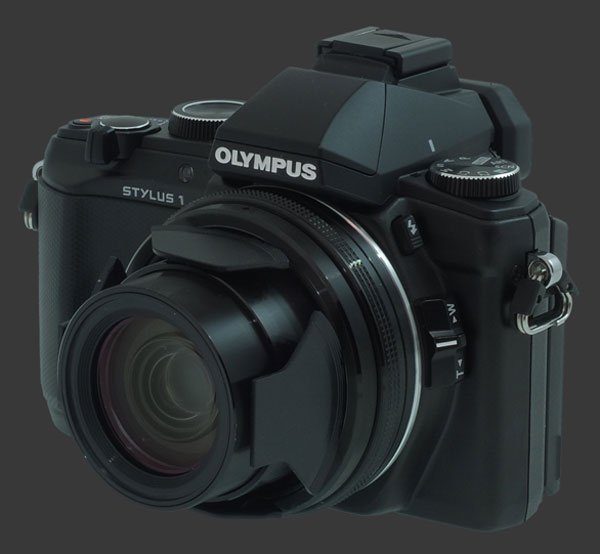
Stabilized 10.7X Wide-Angle F/2.8 Optical Zoom Lens
The 10.7X optical zoom range, equivalent to 28-300mm in 35mm-terms, is suitable for most subjects. Near the wide-end, it can be used for architecture and interiors as long as they are not too large. The long end allows for candid street photography, spectator sports and even some wildlife photography. The built-in 5-axis image-stabilization system compensates for small involuntary movements of the photographer to capture still subjects when light is low.
The constant and relatively bright F/2.8 aperture is extremely impressive considering the size of this camera. A reach of 300mm with F/2.8 is quite rare and would be quite heaver on an interchangeable lens camera. Only a few much larger ultra-zooms can do it.
ISO 100-12800 Range
This wide ISO range covers bright to rather dim lighting conditions. This is typical of modern cameras which is accompanied by a reduction of image quality as ISO increases. The CMOS used in the Stylus 1 makes more of this range usable than usual, as some models have ISO settings which are unusable.
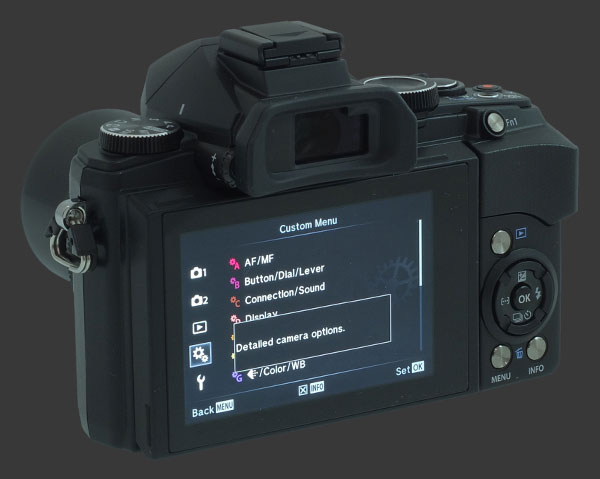
1/2000-60s Shutter-Speeds & 3-Stop ND Filter
The shutter-speed range is wider than most digital cameras and covers both action and night photography. The maximum shutter-speed of 1/2000 can freeze all but fast motorized sports. The Stylus 1 would rarely need to go any faster in bright light unless shooting straight into the sun thanks to its optional neutral density filter.
With slow shutter-speeds reaching 60s until the top ISO of 12800, the Stylus 1 can shoot in very low-light. A one minute exposure is long enough to nicely photograph light trails of moving vehicles. The built-in 3-stop ND filter allows this camera to shoot at slower shutter-speeds for creative photography, reducing the sensitivity down an equivalent of ISO 12.
This Olympus also allows for Bulb exposures, something which is extremely rare among fixed-lens cameras. Exposures of up to 15 minutes are possible. This is useful for capturing sparks and astro-photography.
White-Balance
The Stylus 1 is equipped with numerous and detailed white-balance controls. There is an automatic (AWB) setting, 6 presetsDaylight, Shade, Cluody, Incandescent, Fluorescent, Flash, a Kelvin setting and two custom white-balance memories. All settings except Kelvin can be fine-tuned along 2-axis in 15-steps. Each step is fine and allows precise control over color rendition. There is also WB Bracketing which can vary white-balance along one or two axis with 3 steps along each. This means that either 3 or 9 files are produced from a single release of the shutter. There are 3 step sizes which can be chosen independently on each axis.
Customizable Image Parameters
The Olympus Stylus 1 has 5 Picture Modes which affects how it renders colors and details: iEnhance, Vivid, Natural, Muted and Portrait. Contrast, Sharpness and Saturation are controllable in 5-steps. There is also a Gradation option which can be set to Normal, Low Key, High Key or Auto. There is also a Monotone mode, along with a number of artistic filters.
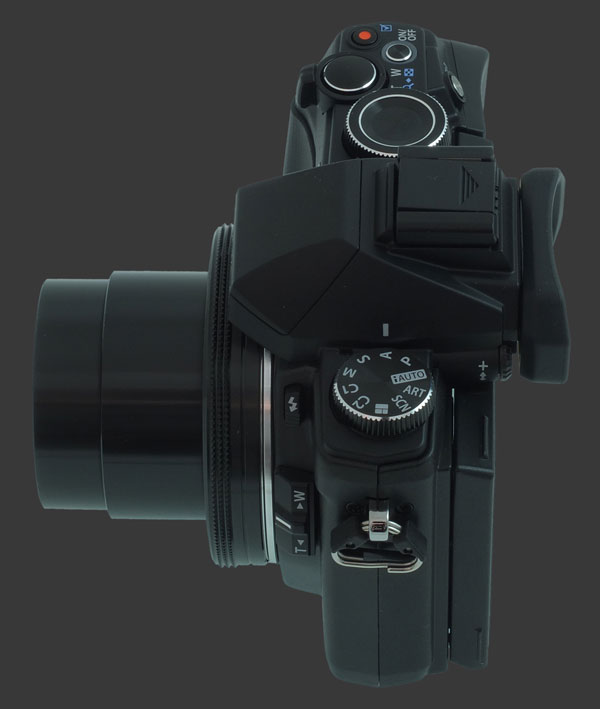
Exposure Modes
All PASM exposure modes are available and dual-controls dials are there to set them efficiently. Two Custom memories are there to save user settings. There also 12 Scene modes plus an Automatic mode, called iAuto. Two scene modes are worth noting: Panorama and Multiple-Exposure.
Panorama mode locks exposure and displays a guide to align multiple images. Unlike with the XZ-2, there is no automatic merging, but more shots are possible with the Stylus 1. Multiple-Exposure produces a single image from two separate exposures. After the first shot is taken, it appears superimposed over the preview to align the second shot. The blended results are saved when the second shot is taken.
Metering & Exposure Compensation
There are 5 metering modes on Olympus Stylus 1: Multi-Segment (ESP), Center-Weighed, Spot, Highlight Spot and Shadow Spot. The first 3 are the most common modes among advanced cameras. The availability of the Spot option allows to precisely select the mid-tone from a scene. The last two are unique to Olympus and allow to meter using a highlight or shadow, rather than a mid-tone.
Metering can be adjusted by ±3 stops, in 1/3 steps with Exposure-Compensation (EC) or Flash-Compensation (FC). The EC range is standard on modern cameras. The FC range is much more than usual though.
The Stylus 1 offers Auto-Exposure Bracketing (AEB). It takes 2 or 3 consecutive shots, one normal, one under- exposed and one over-exposed. The ordering cannot be changed to a more natural, under-normal-over. The increments between exposures is controllable from 1/3 to 1 EVs in 1/3 increments. There are options for AEB, WB, FL, ISO and ART bracketing.
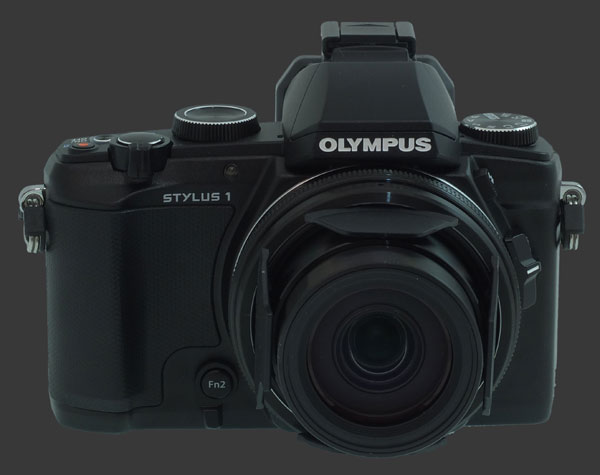
Continuous Drive & Self-Timers
There are a good number of Self-Timer options with fixed options for 2s and 12s delays. The custom Self-Timer captures up to 10 images with a selectable delay from 1 to 30 seconds and interval of ½s to 3s.
The continuous drive runs at 7 FPS. It can capture an impressive 70 JPEG images or 25 RAW files in a single burst, assuming a sufficiently fast card. This rivals even advanced DSLRs in terms of buffering.
Autofocus & Manual Focus
The Olympus Stylus 1 has 5 focus modes:
- Autofocus: This is a standard single-shot (AF-S) mode which locks focus with a half-press of the shutter. The camera stops to focus as soon at it locks. All digital cameras at least support this.
- Macro: This is simply a version of AF-S which lets the camera focus closer at any focal-length. Almost every camera has a mode like this and is mostly there to speed up standard autofocus mode.
- Continuous: This continuous (AF-C) mode constantly adjusts focus within an area.
- Tracking: This is a Subject Tracking AF-C mode. It uses the entire focusing range, so can focus at macro distances as well.
- Manual Focus: The focus distance is set manually in MF mode. There is a rough scale to indicate distance, plus a magnified to assist focusing. The front ring or rear vertical directions of the 4-way controller can be used to set the focus-distance.
Autofocus can automatically choose among 28 focus points or the point can be manually selected. In Tracking AF-C mode, the selected point is used to lock initial focus but the camera tracks a subject even if it moves to another focus area.
Built-In Flash & Hot-Shoe
This digital camera has a built-in flash, set free via a mechanical release. Keeping the flash down, prevents the camera from using it in all modes. The flash range is an incredible 10.3 meters throughout the zoom range! It has Auto, Redeye, Fill, Fill & Redeye and Off flash modes. Flash can also be manually controlled between full and 1/64 power.
There is a standard hot-shoe which naturally supports external lighting. Although it is compatible with an add-on flash, most such flashes are much heavier than the Stylus 1 and we suspect people will prefer to use a remote-trigger instead.
Connectivity & Power
There is a built-in WiFi function in the Stylus 1. It also sports a Micro-HDMI slot and USB 2.0 connection. WiFi can be used both to transfer images and control the camera.
The Olympus Stylus 1 support SDXC memory cards. For HD video, a fast card is recommended. The camera is powered by a small proprietary lithium-ion battery which gives it a battery-life of 410 shots according to the CIPA standard. This is more or less average these days.
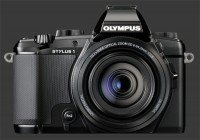 |
Please Support Neocamera
All information on Neocamera is provided free of charge yet running this website is a huge endeavor. Purchases made via affiliate links found throughout the site help keep it running and up-to-date. There is no additional cost to you, so please consider buying via these links to our affilates:
If you found any information on this site valuable and did not purchase via our affiliate links, please considering donating via PayPal:
Any amount will be greatly appreaciated. Thank you for your support!
Olympus 1 Highlights

Sensor-Size: 8 x 6mm

Actual size when viewed at 100 DPI
| 12 Megapixels Ultra Zoom | ISO 100-12800 |
| 10.7X Wide Optical Zoom | Shutter 1/2000-60s |
| Built-in Stabilization | Full manual controls, including Manual Focus |
| 0.44" Built-in EVF 1.4 Megapixels (0.58X) | Custom white-balance with 2 axis fine-tuning |
| Automatic Eye-Start sensor | Spot-Metering |
| 2 Axis Digital Level | Hot-Shoe |
| 7 FPS Drive, 70 Images | Lithium-Ion Battery |
| 1920x1080 @ 30 FPS Video Recording | Secure Digital Extended Capacity |
| 3" LCD 1 Megapixels |
Updates
2025.01.18

Fujifilm GFX 2025 Lens Roundup
Lens Review roundup of Fujifilm GFX Medium-Format lenses. Quality, performance and handling of the GF20-35mm F/4R WR, GF30mm F/3.5 Tilt-Shift and the GF55mm F/1.7.
2024.11.18

Best 2024 Photography Gifts for Every Budget
Great gifts for photographers and photo enthusiasts selected for every budget among the best products of 2024.
2024.08.07

Eye Protection Tips for Professional Photographers
The four main considerations for professional photographers regarding eyewear.
2024.07.14

Fujifilm X100VI Review
Flagship fixed-lens compact digital camera with a 40 MP sensor and Image-Stabilization, a first for the series. Retro design featuring dual control-dials, plus direct ISO, Shutter-Speed and EC dials. Its hybrid viewfinder can switch between EVF and OVF mode.
2024.05.09

Fujifilm GFX100 II Review
Flagship 102 Megapixels Medium-Format Mirrorless Digital Camera with 8-Stop 5-Axis IBIS, 8 FPS Drive, 8K Video and 400 MP Super-Resolution capture in a weatherproof and freezeproof body with dual control-dials and dual memory-card slots.
2024.04.03

Fujifilm X-T5 Review
Newest Fujifilm flagship boasting a 40 MP APS-C sensor, 5-axis IBIS with 7-stop efficiency, 15 FPS continuous drive, 6.2K Video capture, dual control-dials and dual SDXC UHS-II slots in a sturdy weatherproof and freezeproof body.
2023.11.20

Best Digital Cameras of 2023
Find out which are the Best Digital Cameras of 2023. All the new Mirrorless Digital Cameras from entry-level to high-end professional.
2023.07.10

Fujifilm X-H2 Review
40 Megapixels APS-C Hybrid Mirrorless Digital Camera with 7-stop IBIS. Fastest shutter ever and 8K video capture. Large builtin EVF with 0.8X magnification and 5.8 MP, plus an Eye-Start Sensor. Packed with features and large number of controls in a weatherproof and freezeproof body.
2023.05.07

Sony FE 20-70mm F/4G Review
Review of the unique Sony FE 20-70mm F/4G lens. The optical zoom of this lens spans ultra-wide-angle and medium focal-length coverage, making it one of the most versatile Full-Frame lenses on the market.
2023.01.15

Huion Inspiroy Dial 2 Review
Review of the Huion Inspiroy Dial 2 tablet, a medium sized drawing surface with dual dials and customizable buttons. Connects via USB-C or Bluetooth 5.0 with Windows, Linux and Android support.
2022.12.08

How to Pack for a Photo Trip
Find out how to pack for a travel photography trip, carry your gear safely while meeting airline regulations.
2022.11.13

Best Digital Cameras of 2022
The best digital cameras of 2022. A short list of the most outstanding models in their respective categories. Choose one for yourself or as a gift.













